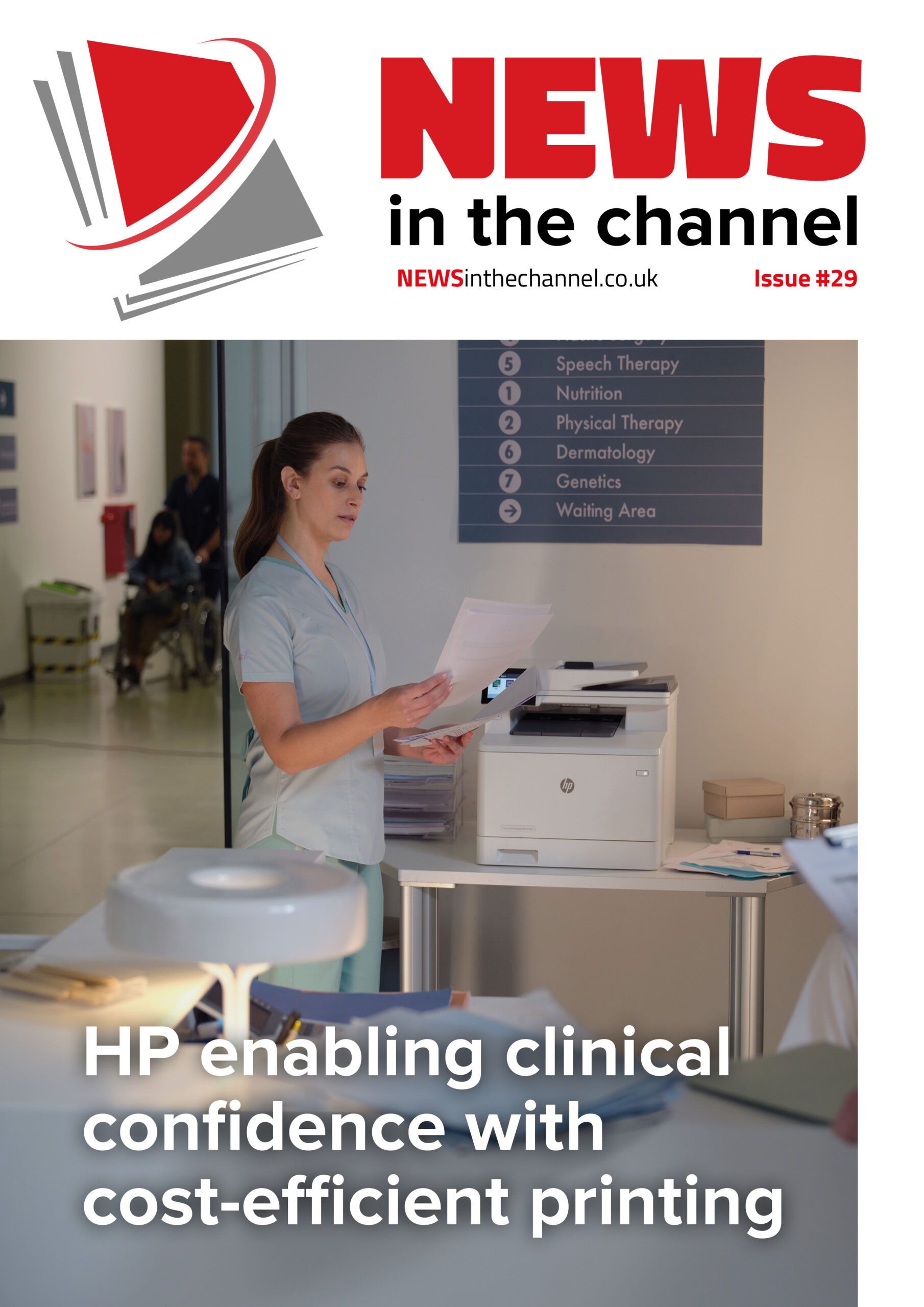Desktop as a Service is becoming increasingly talked about, especially with the rise of hybrid workforces. But what should be included in a DaaS solution and what are the barriers that providers often encounter among customers to adopting it and how can be they be overcome?
Two of the lasting impacts of the pandemic on businesses has been the moves to hybrid working for many office-based staff and greater adoption of cloud-hosted services as flexible solutions are sought to ensure business can be conducted anywhere.
This has also brought solutions such as Desktop as a Service (DaaS) into the conversation for resellers. “DaaS is particularly attractive to organisations needing security, scalability and centralised compute with collaborative data sets such as architecture, industrial design and post-production,” says Tim Whiteley, co-founder of Inevidesk.
That said, as Stephen Homer, portfolio lead for digital workplace at Getronics, notes, uptake of DaaS is slow currently. “We’re not witnessing a major rush over to DaaS,” he says. “But we are starting to see a small proportion of customers shift from buying virtual desktop infrastructure to DaaS. At the moment this is limited to proofs of concepts and that’s across most sectors but predominantly manufacturing, service and retail.
“Generally, customers are using DaaS for specialist use cases where there’s a specific need, but they can’t carry out the work on a physical machine. Instead, they want to be able to build something virtually for the flexibility it offers, such as code testing. And DaaS lends itself to this process.”
But Stephen adds that interest in DaaS should grow in the future, and Andy Brown, technical services director, UK at TD SYNNEX, notes that the uptake of DaaS and adoption of cloud-hosted desktops is part of the wider trend seen in many areas for more IT to be consumed as a service.
“DaaS tends to be adopted by organisations that want to provide maximum flexibility for their users while keeping close control over the way applications and services are used, or the kind of service they need to deliver,” he says.
“An organisation running a virtual call centre, for example, might want to provide DaaS as a way of enabling its agents to work anywhere and on any device, in an entirely consistent and secure way. This is an important aspect of DaaS – it gives you a lot of control at the centre, so it’s possible to manage the apps and services that are used.
“SMBs will use DaaS, of course, but usually for the simple reason that it is easier to manage and more flexible than having to manage desktops internally. I’d expect the steady increase in take-up of DaaS to continue as more organisations become comfortable with using IT functions and applications in the cloud. It’s a natural evolution and one that gives you more flexibility and control.”
Miguel Rodriguez, managing director, SYNAXON Hub, agrees that there is interest from SMBs. “Proportionately, we see more enquiries about DaaS from partners working with SMBs,” he says. “For businesses that want to maximise the ability of their staff to work effectively from home or any other location – and that’s most businesses today – it’s ideal, as it allows users to access their applications and data from anywhere.”
Advantages of DaaS
There are various advantages to businesses of adopting DaaS, which resellers should emphasise in conversations with customers. “End users only require lightweight devices to connect to cloud-based desktops, increasing portability and saving space and cost,” says Tim. “Laptops or thin client PCs are popular, but older workstations can be repurposed as terminal machines to extend life and reduce hardware churn.
“DaaS means no data sits outside of the central, secure hosted network, reducing risk and mitigating the requirement for VPN, which can be problematic if compromised. Collaborative work is more efficient as data and compute power are centralised – enabling businesses working on large, complex data to draw on talent from multiple locations and avoid issues from multiple data sets, syncing and poor latency.”
Stephen agrees that the biggest advantage of DaaS is having desktops in the cloud, meaning that sensitive data and files can be stored securely rather than on a user’s device. “As we all know, endpoint devices are one of the biggest threats to security, but with DaaS, there’s nothing coming down locally to an employee’s device that could be leaked, copied or moved elsewhere,” he says.
“DaaS can also provide lower friction, more continuity and better employee experience. Employees can leave the document or email they’re working on, turn their device off and drive to the office. Once there, they can jump on any computer, log on to their desktop and all the work is there as they left it, without them having to save anything.
“Having a virtual desktop in the cloud as opposed to in a platform running from multiple servers also means you don’t have to pay someone to look after that infrastructure – everything is taken care of by the vendor.”
Growing managed services
There are advantages of offering DaaS for resellers too. Miguel adds that DaaS is attractive for partners that are looking to develop and grow their managed services business. “This is because it’s a simple and cost-efficient both for them and their customers,” he says.
“Of course, setting up and running a DaaS service is not straightforward – and this is why SYNAXON developed Managed Workplace – a complete, ready-to-deploy DaaS offering that partners can offer without incurring any set-up costs of having to employ specialist personnel.
“Partners can offer their own services alongside Managed Workplace or make use of our other ready-to-deploy managed services – for endpoint security, antivirus, backup, and remote management and monitoring, to expand and grow their proposition – and make sure it’s secure and properly managed.”
Optimal provision
When resellers are looking to provide DaaS, there are certain considerations for what should go into an optimal solution for customers.
“There are a couple of key things customers should be looking for from their DaaS vendor,” says Stephen. “Firstly, a transparent pricing model is needed as prices can vary wildly based on resource specification, usage and whether optional extras are needed. Vendors also need to provide clear work role or persona mapping so that the solution can be right-sized by fingerprinting resources against needs.
“Finally, somebody has got to be responsible for monitoring and managing the DaaS to make sure it’s compliant, has all the latest updates, and is secure. Most DaaS providers offer this and the cost of this should be detailed in your initial quote.”
Tim adds that DaaS provision should include appropriately specified compute power. “Focusing on the potential disruption of inadequately considered overprovision,” he says.
“Also, dynamic resources can be expensive, so consider resource requirements. It is often cost-efficient to have a core, persistent desktop resource and scale outside of this to help with cost management. Finally, an appropriate remote desktop tool is key to the successful use of any DaaS service, to ensure optimal user performance.”
Overcoming barriers
Some customers are wary of adopting DaaS, but common concerns can be overcome. Tim notes that one common barrier is a worry over data location and egress. “It’s important that data storage meets contractual requirements and can be migrated in the future,” he says. “Technical expertise is necessary to manage DaaS estates as some vendors offer complex administration.
“Also, cost is a concern. DaaS can offer great ROI when factored into wider strategy and when appropriate solutions are used. Without research and guidance, a DaaS solution can be expensive and underperform, so wise partner choice is critical.”
Stephen agrees that the biggest barrier to customers is often cost. “Most businesses can lease a laptop with a Windows 11 platform on it for the same price as they can lease DaaS,” he says. “You could move from one to the other, but you still need the device, which the employer is paying for. When BYOD becomes standard, that’s when I think we’ll begin to see a real shift to DaaS.”
Miguel adds that one of the main things that holds customers back from committing to DaaS is unfamiliarity. “If they have not made use of a managed service before, it can seem like a daunting prospect, especially to an SMB,” he says. “This is why it also makes sense for partners to work with a fully established provider of DaaS like SYNAXON. We have the resources, the expertise and the experience to ensure that everything runs smoothly.”
Andy agrees that working with an established partner can be useful for resellers. “As we partner with most of the leading players in this market, we’re ideally placed to act as a trusted advisor to partners on cloud-based desktops and related solutions. Security is the most important of those adjacent technologies and here too, we are well-positioned to support partners in delivering the best advice and solutions through our security practice.”
Security
Indeed, as Andy notes, security is also a common concern, but DaaS can be very secure. “While DaaS is undoubtedly more secure than desktops on devices, customers still need to make sure they’re applying security best practice,” notes Stephen. “Most importantly, you’ll need threat protection to defend against cyberattacks, malware and phishing campaigns.
“You’ll also need to manage identities through a highly secure multi-factor authentication system to make sure that only the authorised user can access their desktop.”
Tim agrees that the security basics need to be adhered to. “DaaS is only as secure as its configuration and usage,” he says. “It offers security benefits through centralisation and reduces vulnerable endpoints, but it needs the basics such as MFA, endpoint security software and users who adhere to best cybersecurity practices.”
While DaaS is emerging currently, it appears that as such things as BYOD take hold then so DaaS will become more popular in the months and years to come, so resellers should be looking to offer it now.











